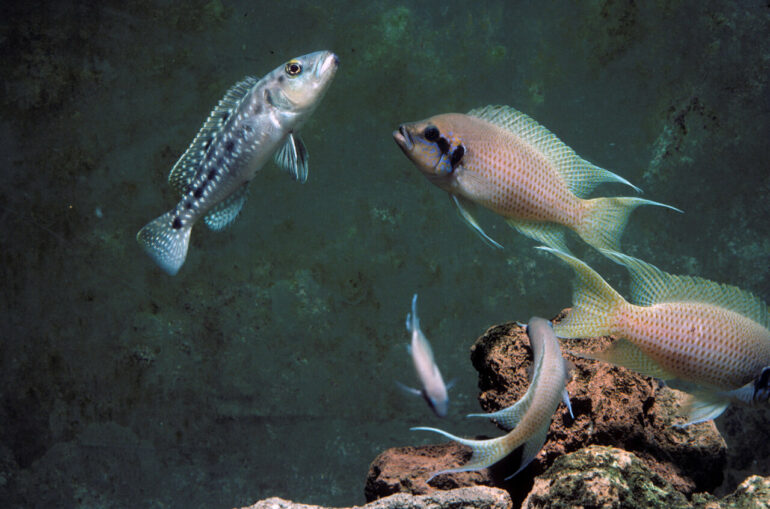Altruistic behavior is often seen as an exclusively human characteristic. However, behavioral research has uncovered numerous examples of altruistic behavior in the animal kingdom. In a new study, researchers at the University of Bern show that animals that help others “selflessly” to raise their young generate an evolutionary advantage.
Altruism is defined as doing something that benefits someone else, at a cost to oneself. In the animal kingdom, the most astonishing examples of this selflessness occur in the rearing of the next generation. Animal societies that exhibit cooperative breeding include cichlids in Lake Tanganyika, some mammals, many bird species, and numerous insects. In these societies, typically a single, dominant breeding pair produces young, and the other members of the group help in raising them. These members of the group are therefore acting altruistically by taking care of young that are not their own.
This type of care makes sense from an evolutionary perspective when the young are siblings of the caregivers—the brood care helpers are successfully handing down the genes that stimulate the care via their siblings, with whom they share these genes. However, from an evolutionary perspective it does not seem to make sense to look after young with whom you are not related. So why do unrelated group members often help to raise “foreign” young? A new study in the Science Advances academic journal by Irene Garcia Ruiz and Michael Taborsky from the Institute for Ecology and Evolution at the University of Bern, in collaboration with Andres Quinones from the University of Los Andes in Bogota, Colombia, and the University of Neuchâtel, reveals how this altruistic care of young can evolve by natural selection.
Genetic fitness benefits are key
Natural selection favors traits that improve the bearers’ genetic fitness. Individuals with better survival chances typically benefit from a higher reproductive success throughout their life. “If belonging to a social group yields an essential survival advantage, cooperative breeding may evolve. This is shown in our study using computer simulations,” says lead author Irene Garcia Ruiz. Using mathematical models, the researchers were able to simulate the decisions of group members that affected their genetic fitness, so that they could compare their resulting success rates.
When there is a survival advantage to group living, the study reveals two ways in which natural selection causes subordinate group members to help with caring for the young of dominant breeders. One possibility applies if the young are closely related, e.g. the siblings of the caregivers, as outlined above. In this situation, the care increases the probability that the genes shared between helpers and receivers of help are spread to the next generation (a mechanism referred to as “kin selection”).
The second way involves what is known as “individual selection,” which is not contingent on relatedness levels. When the altruistic brood care provided results in more young animals surviving, the social group expands. In turn, this increases the survival chances of the caregivers, because it reduces their own risk of falling victim to a predator, for example. It hence increases the probability that they will be able to breed successfully later on. Both selection mechanisms interact positively with each other.
Which selection mechanism prevails depends on the environmental conditions
“A key finding of our study is that the environmental context determines which of these two selection mechanisms comes into play, i.e. which one is more significant for the evolution of cooperative breeding,” says Irene Garcia Ruiz. If the environmental conditions are favorable (few predators), then kin selection is the more important mechanism selecting for cooperative care. If the environmental conditions are less favorable (more predators), then increasing the survival chances of individuals by raising the number of group members is a more important selection mechanism causing non-parental offspring care.
“Whether an animal does better by remaining in its territory and raising the offspring of others in the group, or rather by moving elsewhere to attempt independent reproduction, varies with an individual’s age,” says Michael Taborsky. Depending on the environmental context, natural selection favors animals to move away from their territory earlier or later.
The particularly noteworthy finding of this study is that the relative importance of kin selection and individual selection varies depending on the environmental context, and that both the age of the animals and the ecological conditions significantly influence the selection of philopatry and altruism.
More information:
Irene García-Ruiz et al, The evolution of cooperative breeding by direct and indirect fitness effects, Science Advances (2022). DOI: 10.1126/sciadv.abl7853
Provided by
University of Bern
Citation:
Unselfish behavior has evolutionary reasons (2022, May 30)



